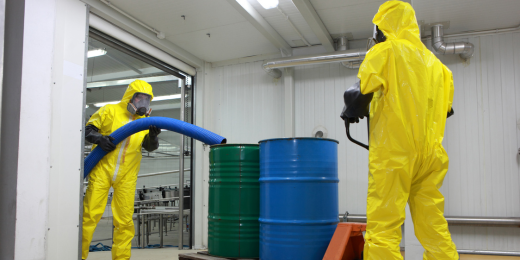Things about Reclaim Waste
Things about Reclaim Waste
Blog Article
Not known Details About Reclaim Waste
Table of ContentsUnknown Facts About Reclaim WasteAbout Reclaim WasteHow Reclaim Waste can Save You Time, Stress, and Money.Some Known Facts About Reclaim Waste.Fascination About Reclaim Waste
Discover the types, occurrences, and forms of liquid waste. Residential sewage waste refers to the waste and products from a residential septic container. This sort of waste is produced by human beings in residences, schools, and other structures. This only includes septic systems that have a drainpipe field. The appropriate administration and disposal of domestic sewage waste need fluid waste to be transferred to a sewer therapy plant where the correct methods and equipment are put on detoxify and take care of waste.
Industrial waste usually includes possible hazards, such as flammable materials or a combination of liquid and solid waste items, and needs an advanced and comprehensive disposal process. The disposal of industrial waste typically entails the filtering of waste prior to transport to guarantee secure and proper disposal. Hazardous waste is created from by-products and runoff of commercial procedures and manufacturing.
This sort of waste can not utilize the exact same sewer management transportation or procedures as septic or industrial liquids. The commercial waste monitoring process calls for the inspection and screening of liquid waste before it undertakes the disposal procedure (liquid waste removal melbourne). Drainage waste is the fluid waste that originates from runoff and excess stormwater in highly inhabited areas or cities
Overflow waste can create contamination and flooding otherwise dealt with properly. Find out more about sewer cleaning and waste monitoring. Making sure correct waste management can prevent disasters and lower ecological injury. Both people in property settings and professionals in industrial or production industries can gain from recognizing the procedures and policies of liquid waste management.
Indicators on Reclaim Waste You Should Know
Get in touch with PROS Services today to find out about our waste administration and disposal solutions and the proper ways to look after the liquid waste you create.
(https://reclaimwaste1.edublogs.org/2024/11/12/efficient-liquid-waste-removal-and-disposal-your-complete-guide-to-sustainable-waste-management/)
This supposed 'wastewater' is not only a vital resource however, after treatment, will be released to our land, rivers or the ocean. Used water from commodes, showers, bathrooms, cooking area sinks, washings and commercial processes is recognized as wastewater.

water made use of to cool down machinery or tidy plant and equipment). Stormwater, a kind of wastewater, is overflow that flows from agricultural and urban locations such as roofs, parks, gardens, roadways, courses and gutters right into stormwater drains, after rain. Stormwater streams without treatment directly to local creeks or rivers, at some point reaching the sea.
The Ultimate Guide To Reclaim Waste
In Queensland, the majority of wastewater is dealt with at sewer therapy plants. Wastewater is transported from residential or commercial websites via a system of sewers and pump terminals, recognized as sewerage reticulation, to a sewage therapy plant.
The Department of Natural Resources encourages city governments regarding handling, operating and maintaining sewerage systems and treatment plants. In unsewered locations, regional federal governments may call for householders to install private or house sewer treatment systems to deal with residential wastewater from commodes, kitchen areas, bathrooms and laundries. The Division of Natural Resources authorises making use of family systems when they are proven to be effective.
A lot of stormwater obtains no therapy. In some new subdivisions, treatment of some stormwater to eliminate trash, sand and gravel has begun making use of gross toxin catches. Wastewater therapy occurs in 4 phases: Removes solid matter. Larger solids, such as plastics and various other items mistakenly discharged to sewage systems, are gotten rid of when wastewater is travelled through displays.
Uses small living organisms understands as micro-organisms to break down and remove remaining liquified wastes and great bits. Micro-organisms and wastes are integrated in click now the sludge.
The 25-Second Trick For Reclaim Waste
Nutrient elimination is not available at all sewage therapy plants since it requires costly specialized equipment. It is coming to be much more usual in Queensland. Clear fluid effluent created after treatment might still include disease-causing micro-organisms. If this effluent is released into waterways such as rivers or the sea, the micro-organisms will eventually pass away out.

Many wastewater moves right into the sewerage system. Under the Act, regional governments administer approvals and permits for environmentally pertinent tasks (ERAs) entailing wastewater releases that could have a neighborhood effect.
The Best Guide To Reclaim Waste
Surveillance provides factual information concerning water top quality and can validate that permit problems are being met. The details obtained via tracking offers the basis for making water quality choices.
Report this page